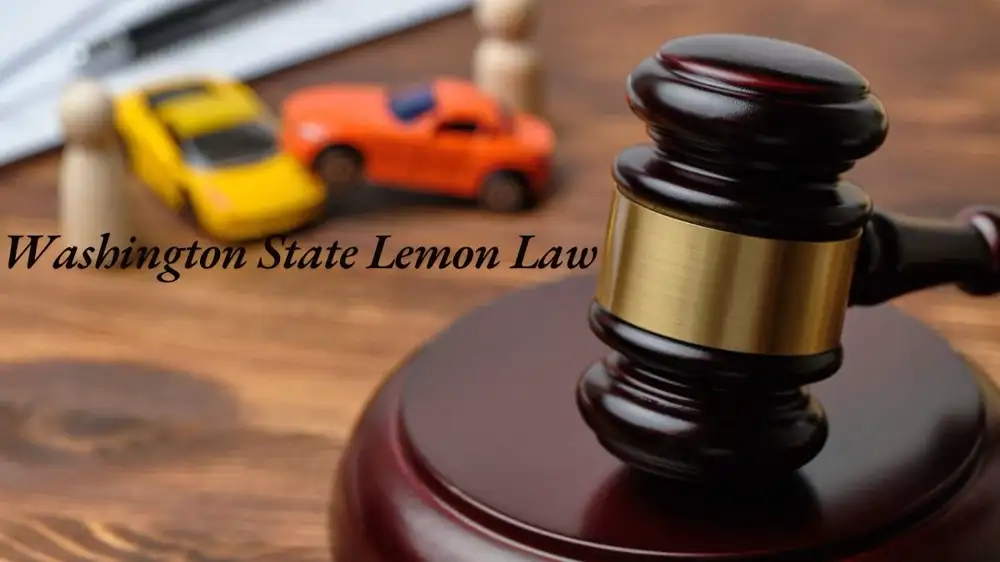Law
Above-Ground Pool Laws in Boone, Iowa: Your Complete Guide to Compliance and Safety
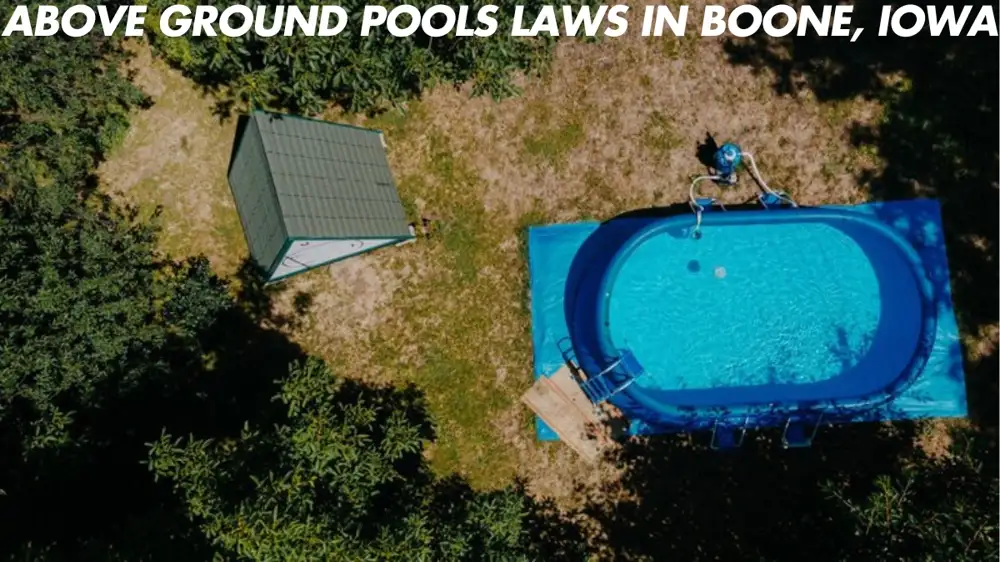
Installing an above-ground pool in Boone, Iowa, is a fantastic way to enjoy the warm Midwest summers. But before you start shopping for pool floats, it’s crucial to understand local laws to avoid fines, safety hazards, or disputes with neighbors. This guide dives deep into above-ground pool laws in Boone, Iowa, providing actionable tips, local resources, and expert advice to ensure your pool setup is safe, legal, and stress-free.
Why Boone Has Laws for Above-Ground Pools
Above-ground pools may seem simple, but they come with responsibilities. Boone’s regulations are designed to:
- Prevent accidents (drowning is the leading cause of death for children under 5).
- Protect property values by ensuring pools don’t encroach on neighbors or create eyesores.
- Manage environmental impact (e.g., proper drainage to prevent flooding).
- Uphold community standards (noise, chemical use, and aesthetics).
By following these rules, you’ll not only stay compliant but also foster goodwill in your neighborhood.
Step 1: Do You Need a Permit? Boone’s Requirements
In Boone, permits are required for most above-ground pools. Here’s how to determine if yours needs one:
Pool Size Thresholds
- Depth: Pools deeper than 24 inches (2 feet) require a permit.
- Volume: If your pool holds 5,000+ gallons of water, a permit is mandatory.
Example: A typical 15-foot round pool with a 48-inch depth holds about 4,978 gallons—just under the limit. But double-check your pool’s specs!
Permanent vs. Temporary Pools
- Permanent pools (e.g., steel-walled or resin frames) always require permits.
- Temporary inflatable pools may not need permits if they’re emptied daily.
How to Apply:
- Visit Boone City Hall (923 8th Street, Boone, IA 50036) or the City of Boone website.
- Submit a Residential Pool Permit Application (including pool dimensions, location, and safety features).
- Pay a 75–150 fee (varies by pool size).
Tip: Processing takes 1–2 weeks. Apply early to avoid summer delays!
Safety Laws: Fences, Alarms, and Covers
Iowa follows the 2009 International Residential Code (IRC) for pool safety, which Boone enforces strictly.
Fencing Requirements
- Height: At least 4 feet tall around the pool area.
- Material: Non-climbable (e.g., wrought iron, vinyl, or wood with vertical slats). Chain-link fences are allowed only if gaps are ≤4 inches.
- Gates: Must be self-closing and self-latching. Latches must be 54 inches high to prevent child access.
Pro Tip: Fences must enclose the entire pool—using your house as a “fourth wall” isn’t allowed in Boone.
Safety Covers and Alarms
- Covers: must support at least 250 lbs (ASTM F1346 standard). Mesh or solid covers are recommended.
- Alarms: Door alarms (for gates) or pool-mounted motion sensors are optional but highly encouraged.
Note: Boone doesn’t currently require alarms, but they’re a smart investment to prevent accidents.
Zoning Laws: Where to Place Your Pool
Boone’s zoning rules ensure pools don’t interfere with utilities, property lines, or public spaces.
Setback Requirements
- Property lines: minimum 10 feet from side and rear boundaries.
- Structures: At least 5 feet from your home, shed, or deck.
- Utilities: Stay 15 feet from overhead power lines and 5 feet from underground gas/sewer lines.
Avoid These Mistakes:
- Placing the pool under trees (falling branches + clogged filters = headaches).
- Blocking sewer access points (city workers need 24/7 entry).
Drainage Rules
- Pool water must drain away from neighbors’ yards to prevent flooding.
- Direct runoff to storm drains or your property’s drainage system (no pooling in streets).
Electrical and Health Codes
Electrical Safety
- Pumps and lights require GFCI outlets (Ground Fault Circuit Interrupters) to prevent electrocution.
- All wiring must comply with the National Electrical Code (NEC). Hire a licensed electrician—DIY work risks fires or code violations.
Health Department Rules
- Water quality: Maintain chlorine levels between 1–3 ppm (parts per million). Test weekly with a kit from Boone’s hardware stores (e.g., Ace Hardware).
- Mosquito control: Stagnant water breeds mosquitoes. Cover the pool when unused or treat with larvicides approved by the Iowa DNR.
Insurance and Liability
Homeowners insurance often doesn’t cover pool-related accidents. Protect yourself:
- Increase liability coverage to at least $500,000.
- Install safety features (fences, covers) to reduce premiums.
- Add an umbrella policy for extra protection.
Did You Know? If someone gets hurt in your pool, Iowa’s “attractive nuisance” doctrine could hold you liable—even if they trespassed.
Consequences of Breaking Boone’s Pool Laws
Ignoring regulations can lead to:
- Fines: 200–1,000 per violation (e.g., missing fence, no permit).
- Pool removal: The city may demand dismantling at your expense.
- Lawsuits: Injured parties could sue for medical bills or trauma.
Pro Tips for Boone Residents
- Talk to Your Neighbors First
Give them a heads-up about your pool plans to avoid disputes over noise or visibility. - Work with Local Pros
Boone-based contractors know the laws inside out. Try:- Above Ground Pool Installers: Iowa Pools & Spas (515-432-1234).
- Electricians: Boone Electric LLC (515-432-5678).
- Keep Records
Save permits, inspection reports, and receipts in a folder. You’ll need these for insurance or resale. - Winterize Properly
Drain and cover your pool by October 15 to meet Boone’s seasonal guidelines.
Frequently Asked Questions
1. Can I install an above-ground pool on a sloped yard in Boone, Iowa?
Answer: Yes, you can install an above-ground pool on a sloped yard, but it requires proper leveling to ensure the pool is stable and safe. You may need to excavate or build a retaining wall to create a flat surface. Boone’s zoning laws may require a permit for significant landscaping changes, so consult the Boone Building & Zoning Department before starting the project.
2. Are there noise restrictions for pool pumps and equipment in Boone?
Answer: While Boone doesn’t have specific noise ordinances for pool equipment, excessive noise from pumps or pool parties could violate general noise regulations. To avoid complaints, place pumps away from neighbors’ property lines and consider using noise-reducing enclosures. Be mindful of quiet hours, typically between 10 PM and 7 AM.
3. Can I use solar panels to heat my above-ground pool in Boone?
Answer: Yes, solar panels are an eco-friendly and cost-effective way to heat your above-ground pool in Boone. Solar heating systems typically don’t require additional permits, but you should ensure the installation complies with local zoning and electrical codes. Consult a licensed contractor to determine the best setup for your pool size and location.
4. What are the rules for pool lighting in Boone, Iowa?
Answer: Pool lighting must comply with the National Electrical Code (NEC) and Boone’s safety standards. Underwater lights must be low-voltage (12V) and connected to a GFCI outlet. Exterior lighting should not create glare or disturb neighbors. Solar-powered lights are a great option for energy efficiency and ease of installation.
5. Can I build a deck around my above-ground pool in Boone?
Answer: Yes, you can build a deck around your above-ground pool, but it must meet Boone’s zoning and building codes. Decks must have proper railings (at least 36 inches high) and comply with setback requirements (10 feet from property lines). A building permit is required for decks over 30 inches high or attached to your home.
Final Checklist for Boone Pool Owners
✅ Obtain a permit from Boone City Hall.
✅ Install a 4-foot fence with self-latching gate.
✅ Place the pool 10+ feet from property lines.
✅ Hire an electrician for GFCI outlets.
✅ Test water chemistry weekly.
Stay Updated!
Laws can change. For the latest info, contact:
- Boone Building & Zoning Department: 515-432-4216
- Boone City Hall Website: www.boonegov.com/pools
By following Boone’s above-ground pool laws, you’ll create a safe, fun oasis for your family while keeping your neighbors and local authorities happy. Now, grab your swimsuit and enjoy that Iowa sunshine—responsibly! 🌞
Law
Newton’s Third Law Concept Development Practice Page: A Comprehensive Guide
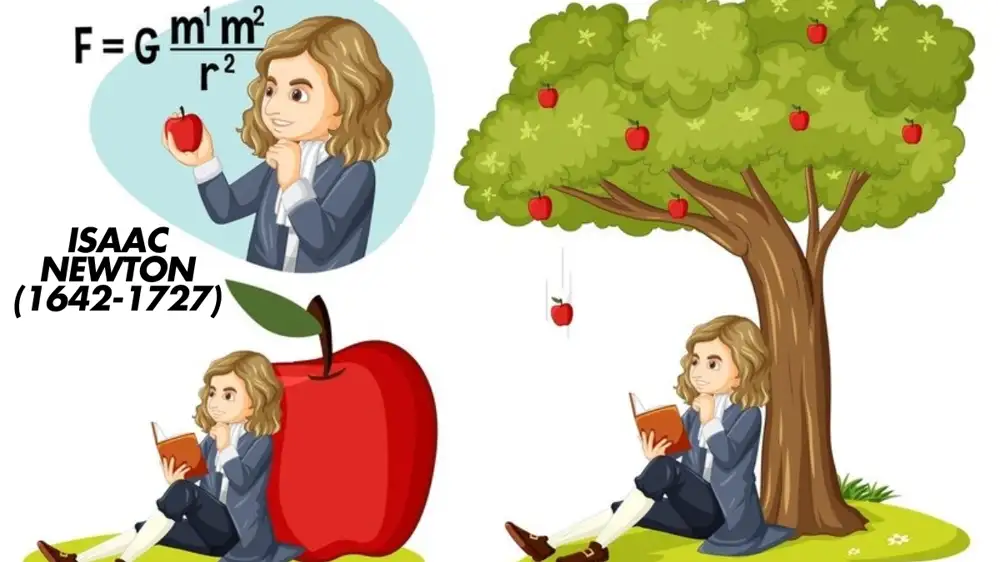
Understanding Newton’s Third Law of Motion is fundamental to grasping how forces interact in the physical world. Often introduced in school science curricula, this law can sometimes be confusing, but with the right practice and explanation, it becomes easier to understand. A well-structured “Newton’s Third Law Concept Development Practice Page” is an excellent resource for learners at various stages of their physics journey.
In this article, we will explore the details of Newton’s Third Law, how to develop your understanding of it, and how a practice page can help solidify the concepts. By the end, you’ll have a clear understanding of the law and how to apply it in different scenarios.
What is Newton’s Third Law?
According to Newton’s Third Law of Motion, there is an equal and opposite reaction to every action.This means that if an object exerts a force on another object, the second object exerts a force of the same magnitude but in the opposite direction on the first object. The forces are always paired, acting on different objects.
Let’s break this down with an example. If you push a book on a table, the force of your push creates a reactionary force from the table. The force of the book pushing back on your hand is equal in magnitude but opposite in direction. Similarly, when a rocket launches, the exhaust gases push downwards, and the rocket is pushed upwards by an equal and opposite force.
Key Points to Remember:
- Forces always come in pairs.
- The forces are equal in magnitude but opposite in direction.
- They act on different objects.
The Importance of Newton’s Third Law
Newton’s Third Law is crucial for understanding how the physical world works. Without it, we wouldn’t be able to explain how objects interact, why things move, or even how vehicles and airplanes are able to operate.
For example:
- Walking: Your feet press against the floor as you move.The ground pushes back with an equal force, which allows you to move forward.
- Swimming: In swimming, when a swimmer pushes against the water, the water pushes back with equal force, propelling the swimmer forward.
- Flying: An airplane’s engines push air backwards, and the equal and opposite reaction propels the airplane forward.
Newton’s Third Law helps us understand these everyday phenomena and more, making it one of the cornerstones of classical mechanics.
What is a Concept Development Practice Page?
A “Newton’s Third Law Concept Development Practice Page” is a study tool designed to help students understand and apply the principles of Newton’s Third Law. It typically includes a variety of exercises that challenge students to think critically and apply their knowledge of the law to real-life situations.
A well-designed practice page often includes the following sections:
- Short Explanation of the Law: A clear and concise overview of Newton’s Third Law.
- Interactive Problems: Practical problems or scenarios where students can apply the law to determine forces, reactions, and outcomes.
- Multiple-Choice Questions: These questions test the student’s understanding of the concept.
- Visuals and Diagrams: Diagrams of forces, motion, and interactions between objects.
- Real-World Examples: Situations or experiments where Newton’s Third Law is evident, helping students connect theory with practice.
Such practice pages are helpful because they guide the learner through different scenarios and allow them to see how the law applies to various situations. By regularly practicing these problems, students can internalize the concept and feel more confident in applying it in both academic and real-world contexts.
Developing an Understanding of Newton’s Third Law: Step by Step
Now that we know what a practice page entails, let’s take a look at how to develop a deep understanding of Newton’s Third Law step by step.
1. Start with Simple Examples
Begin by working through basic, straightforward examples. Take a person standing on the ground, for instance. The force of gravity pulls them downwards (their weight), and the ground exerts an equal and opposite upward force on them (the normal force). These two forces balance each other, and the person remains stationary.
This simple example demonstrates how action and reaction forces are equal and opposite. By understanding such basic situations, learners can more easily move on to more complex scenarios.
2. Explore Action and Reaction Forces in Different Contexts
Once you are comfortable with basic examples, try applying Newton’s Third Law to different contexts. For instance, when a car accelerates, the car’s wheels exert a backward force on the road (action), and the road exerts an equal and opposite forward force on the car (reaction). In this case, the road’s reactionary force helps propel the car forward.
3. Use Diagrams to Visualize Forces
Visual aids are essential when learning Newton’s Third Law. On a concept development practice page, you might encounter diagrams showing forces acting on objects. These diagrams can help illustrate how forces work in pairs and can clarify how to apply the law. For example, when a person pushes a wall, you can draw arrows representing the pushing force and the equal and opposite reaction force.
By visualizing forces through diagrams, learners can better understand the direction and magnitude of the forces at play.
4. Practice Applying the Law to Real-World Scenarios
After becoming familiar with theoretical problems, move on to real-world examples. For example, when you jump off a small boat into the water, the boat moves in the opposite direction. This happens because your body exerts a force on the boat (action), and the boat exerts an equal and opposite force on you (reaction). In practice, this concept explains why certain actions, like jumping off a boat, cause a noticeable movement.
5. Solve Problems with Quantitative Calculations
For students in higher grades or those taking physics, quantitative problems are essential for mastering Newton’s Third Law. These problems might involve calculating the forces involved in a scenario using Newton’s Third Law.
For example, if two ice skaters push off each other, and one has a mass of 50 kg while the other has a mass of 70 kg, you can use the law to calculate how their velocities change when they push off. While this problem involves more complex math, it still relies on the core concept of action and reaction.
Key Questions to Include in Your Practice Page
A well-constructed Newton’s Third Law Concept Development Practice Page should include several types of questions to ensure comprehensive understanding. Below are examples of the types of questions that would appear on a practice page:
1. Multiple-Choice Questions
- Which of the following sums up Newton’s Third Law the best?
- A) There is an equal and opposite reaction to every action.
- B) The faster an object moves, the greater the force exerted.
- C) Objects will continue moving unless a force acts upon them.
- D) All objects fall at the same rate.
2. Short Answer Questions
- A person is standing still on the ground. What is the action and what is the reaction according to Newton’s Third Law?
3. Diagram-Based Questions
- Given a diagram of two objects in contact, identify the action and reaction forces acting between them.
4. Application Questions
- When a rocket launches, how does Newton’s Third Law apply to the rocket and the exhaust gases?
5. Problem-Solving Questions
- Two ice skaters of different masses push off each other. If Skater A has a mass of 55 kg and Skater B has a mass of 70 kg, how would their velocities change after pushing off each other?
Why Regular Practice is Crucial
Like any scientific principle, regular practice is essential for fully understanding and applying Newton’s Third Law. By completing a concept development practice page, students get the chance to apply the law in various scenarios, which strengthens their grasp of the material. The more you practice, the better you will be at identifying action and reaction forces, predicting outcomes, and solving related problems.
The benefits of practicing with a Newton’s Third Law Concept Development Practice Page include:
- Enhanced Problem-Solving Skills: The more you practice, the better you become at identifying the forces at play in a given situation.
- Confidence: With more practice, you gain confidence in applying the law to various real-world situations.
- Improved Understanding: Repetition and exposure to different scenarios deepen your overall understanding of Newton’s Third Law.
5 Essential FAQs on Newton’s Third Law Explained
Here are five commonly asked questions about Newton’s Third Law of Motion, answered concisely to help you better understand the concept and its applications.
1. What does Newton’s Third Law state?
Answer: Newton’s Third Law states that “For every action, there is an equal and opposite reaction.” This means when one object exerts a force on another, the second object exerts a force acting on the first object in the opposite direction but of identical magnitude.
2. How does Newton’s Third Law apply to walking?
Answer: When you walk, your feet push backward against the ground. The ground, in turn, pushes forward with an equal force, propelling you forward. These are the action and reaction forces at work.
3. Does Newton’s Third Law apply to all objects?
Answer: Yes, Newton’s Third Law applies to all objects, regardless of their size or mass. It governs how all forces interact between objects, whether it’s a small pebble or a massive rocket.
4. Why don’t action and reaction forces cancel each other out?
Answer: Action and reaction forces act on different objects, not the same object. They don’t cancel each other out because of this. For example, when you push on a wall, the wall pushes back on you with an equal force, but the forces act on different objects.
5. Can you provide an example of Newton’s Third Law in space?
Answer: In space, rockets launch by expelling exhaust gases backward (action), and the rocket is pushed forward by the equal and opposite reaction of those gases. Even in space, rockets can move because to this idea.
These simple, real-world applications of Newton’s Third Law illustrate its fundamental role in understanding forces and motion.
Conclusion
Newton’s Third Law of Motion is a foundational concept in physics that explains how forces interact between objects. Understanding this principle is essential for explaining everyday phenomena, from walking to rocket launches. A well-designed “Newton’s Third Law Concept Development Practice Page” can significantly aid in grasping the law and applying it to different contexts.
By working through simple examples, using diagrams, solving quantitative problems, and applying the law to real-world scenarios, students can solidify their understanding of action and reaction forces. Regular practice is key to mastering Newton’s Third Law, and a practice page provides the structured environment necessary to facilitate this process.
Incorporating these exercises into your study routine will not only help you excel in physics but also deepen your understanding of the forces that shape the world around you. Whether you’re a student just starting or someone revisiting the topic, practicing with a Newton’s Third Law Concept Development Practice Page is an excellent way to ensure success.
Law
Understanding Washington State Lemon Law: What You Need to Know
Law
Bonner County Law on Using Chainsaws: 7 Critical Things You Need to Know
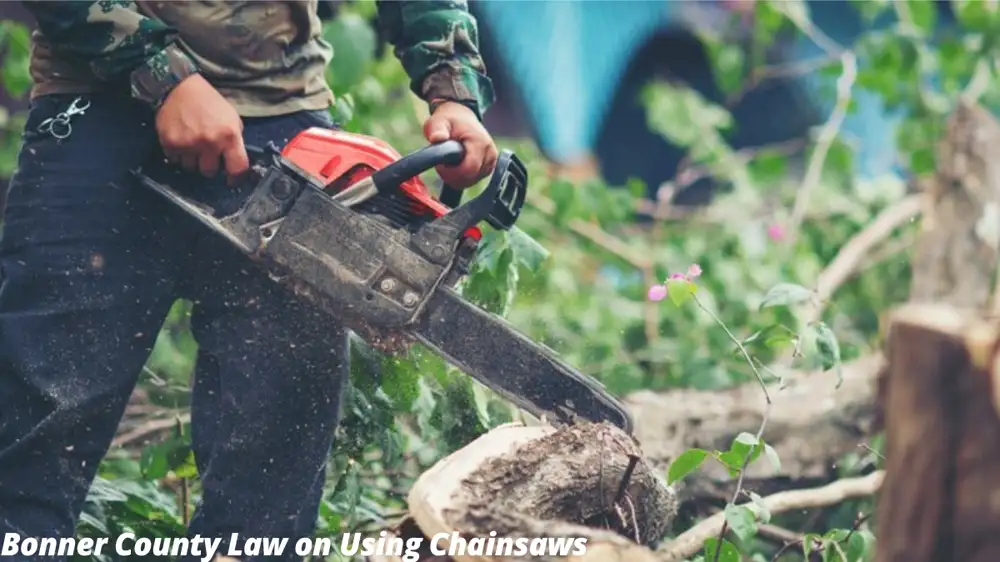
Chainsaws are strong instruments that assist us in clearing land and cutting firewood, among other tasks. But they have risks of their own, just like any other tool. For this reason, local governments, like Bonner County in Idaho, have laws and rules that clearly define when and how chainsaws can be utilized. Anyone visiting or residing in Bonner County should be aware of these restrictions, particularly if they want to use a chainsaw for personal or professional endeavors.
The Bonner County chainsaw statute will be examined in further detail in this article, along with safety guidelines, permits, noise limits, and other topics. Whether you live in the area, work as a contractor, or are just a do-it-yourself enthusiast, this information will help you adhere to local regulations and keep yourself and others safe while working with chainsaws.
Bonner County: What is it?
Let’s give a quick overview of the area before getting into the specifics of the chainsaw usage law in Bonner County. Cities like Sandpoint and Kootenai are part of Bonner County, which is in northern Idaho. It is renowned for its stunning scenery, which includes mountains, lakes, and woods. Due to these natural features, chainsaws are frequently used by contractors and landowners for maintenance, tree removal, and brush removal.
Laws are necessary to control chainsaw use and protect the environment and users because to the abundance of trees and outdoor activities.
Basic Guidelines for Chainsaw Use in Bonner County
1. Using Chainsaws on Private Land
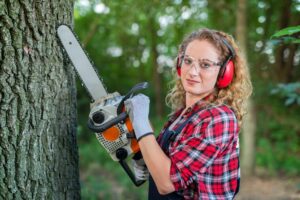
Basic Guidelines for Chainsaw Use in Bonner County
As long as it doesn’t conflict with other local laws, homeowners in Bonner County can use chainsaws on their private land. They are permitted to trim trees, cut firewood, and remove debris, provided they adhere to safety precautions and any applicable regulations.
However, it’s crucial to take the size and kind of tree into account if you intend to cut it down or carry out other tree removal tasks. Trees that are large or close to highways, electrical lines, or other structures can need specific permits or expert assistance. Before beginning such tasks, always consult with Bonner County officials as you would need to adhere to certain protocols.
2. Forest Areas and Public Land
There may be different regulations when operating a chainsaw in national forests or on public property. Bonner County contains large tracts of public land, where local authorities may enforce more stringent laws on chainsaw use. In some cases, you may need permission to clear brush or cut down trees. The Idaho Department of Lands or the U.S. Forest Service typically oversees these areas. Forest Service, which will have policies regarding the use of chainsaws.
Unless you have a special reason, like gathering firewood (and even then, there may be restrictions on how much you can harvest), it is usually illegal to cut down trees on public land. It’s a good idea if you intend to use a chainsaw in certain places.
Rules for Safety When Using a Chainsaw
Chainsaws are strong and possibly hazardous instruments. Like many other areas, Bonner County has rules and regulations to make sure chainsaw users use them safely.
1. Age and Training of the Operator
Chainsaw operators may be required by state and Bonner County legislation to fulfill specific age and training requirements. For instance, in order to operate a chainsaw for business purposes, a person must normally be at least eighteen years old. Before letting their workers use chainsaws, certain contractors and businesses would also need to provide them with safety training.
Taking a safety course is usually a smart idea, even if you’re not a professional. These classes instruct you on how to use a chainsaw, put on a suitable
2. Required Safety Gear
When operating a chainsaw in Bonner County, there are certain safety gear requirements that you must follow. These include:
- Chainsaw chaps: These protect your legs from potential chainsaw accidents.
- Helmet: A hard hat or helmet with a face shield or eye protection helps prevent head injuries and debris-related accidents.
- Hearing protection: Chainsaws can be loud, so it’s essential to wear ear protection to protect your hearing.
- Gloves and steel-toed boots: These items protect your hands and feet from cuts, falls, and other potential injuries.
Safety gear is not just a recommendation—it’s often a legal requirement, especially for commercial use.
3.Guidelines for Safe Operation
Additionally, Bonner County has a number of rules pertaining to the safe use of chainsaws. Operators need to:
- Be mindful of their surroundings and any possible dangers, such as people, electricity wires, and neighboring structures.
- Never use a chainsaw while intoxicated or under the influence of narcotics.
- To prevent issues, make sure the chainsaw is well-maintained and in good operating order.
Accidents, injuries, or even legal costs could arise from breaking these rules.
Bonner County Noise Ordinances
One key consideration when using a chainsaw in Bonner County is noise. Chainsaws are noisy, and excessive noise can disturb neighbors, wildlife, and the local community. To address this, Bonner County has noise ordinances in place that regulate when and where loud equipment can be used.
1. Quiet Hours and Permitted Use Times
Bonner County, like many other counties, enforces quiet hours. These are typically in the early morning or late evening hours when people are trying to sleep. For example, you may be restricted from using a chainsaw between 9 p.m. and 7 a.m. on weekdays, or during similar hours on weekends, depending on the specific neighborhood or zoning area.
If you live in a residential area or a more densely populated part of Bonner County, you should always check the local ordinances to ensure you’re not violating any noise rules. In more rural areas, the rules may be less strict, but it’s always polite to be mindful of your neighbors.
2. Commercial Use Noise Restrictions
For businesses and contractors, there may be additional noise restrictions when using chainsaws. Commercial chainsaw operators must follow the same noise ordinances but may also need to apply for permits if they are working on larger projects or in areas near homes or businesses.
If you’re a contractor working in Bonner County, it’s wise to talk to local authorities before starting any large-scale chainsaw operation to ensure you’re in compliance with noise regulations.
Permits and Licenses for Chainsaw Use
Depending on the nature of your chainsaw work, you may need a permit or license. Here’s a breakdown of when you might need one:
1. Tree Removal Permits
If you’re removing trees on your property in Bonner County, you may need a permit, especially if the tree is large, protected, or located near power lines or other structures. A permit ensures that the tree removal is done safely and in accordance with local environmental laws.
If you’re cutting trees on public land or in national forests, a special permit from the U.S. Forest Service or another government agency may be required. These agencies regulate tree removal to ensure it doesn’t negatively impact the environment or local wildlife.
2. Firewood Collection Permits
For individuals who plan to use a chainsaw to collect firewood from public lands, Bonner County may require a firewood permit. These permits are often seasonal and come with restrictions on how much wood can be harvested. Firewood collection permits are typically issued by the Idaho Department of Lands or the U.S. Forest Service, depending on the location.
Environmental Considerations
The Bonner County law on using chainsaws also emphasizes environmental protection. Chainsaw use, particularly in forested or public areas, can have negative effects on local ecosystems. Some regulations are in place to minimize the impact of chainsaw use on the environment.
For example, when using a chainsaw near rivers or lakes, it’s important to avoid cutting trees that could lead to erosion or other environmental damage. Similarly, chainsaw use in areas with sensitive wildlife must be approached with caution, and certain species may be protected by law.
FAQs: Understanding Bonner County Law on Using Chainsaws
1. Do I need a permit to use a chainsaw on my private property in Bonner County?
No, you generally don’t need a permit to use a chainsaw on private property unless you’re removing large or protected trees, or your work is near power lines. Always check with local authorities to ensure you’re following any specific rules.
2. What safety gear is required for chainsaw use in Bonner County?
Operators must wear safety gear, including chainsaw chaps, a helmet with face shield or eye protection, hearing protection, gloves, and steel-toed boots. This is essential for both safety and legal compliance, especially for commercial users.
3. Are there specific noise restrictions when using a chainsaw in Bonner County?
Yes, Bonner County enforces quiet hours typically between 9 p.m. and 7 a.m. on weekdays, with similar restrictions on weekends. Be mindful of noise, especially in residential areas or when working near homes and businesses.
4. Can I collect firewood using a chainsaw from public land in Bonner County?
Yes, you can collect firewood from public land, but you need a special firewood collection permit. These permits are typically seasonal and come with limitations on how much wood you can harvest.
5. Are there any environmental restrictions when using a chainsaw in Bonner County?
Yes, there are environmental considerations. For instance, chainsaw use near rivers, lakes, or protected wildlife areas may be regulated to prevent erosion or harm to ecosystems. Always follow local guidelines to protect the environment.
Conclusion: Stay Safe and Compliant
Understanding the Bonner County law on using chainsaws is essential for anyone using these powerful tools. Whether you’re working on your own property, cutting wood on public land, or operating as a contractor, it’s important to follow all safety regulations, noise ordinances, and permit requirements. Not only will this help you stay compliant with the law, but it will also protect your safety and that of others.
If you’re ever unsure about the specific rules for chainsaw use in Bonner County, don’t hesitate to contact the local government or relevant authorities. By staying informed and following the law, you can enjoy your chainsaw tasks while keeping your community safe and peaceful.
-

 Travel7 months ago
Travel7 months agoTop 5 Ways Stephen Revetria Elevates the U.S. Travel and Tourism Advisory Board
-

 Crypto8 months ago
Crypto8 months agoUnlock 7 Powerful Cryptocurrency Insights: Delving into NewzNav.com’s Crypto Archives
-

 Technology8 months ago
Technology8 months agoHydrogen Water Machines: Revolutionizing Hydration and Wellness
-

 NEWS & Society8 months ago
NEWS & Society8 months agoChurch of the Holy Spirit News: Events & Impact
-

 Games8 months ago
Games8 months agoDownload Tekken 6 PC: A Comprehensive Resource

